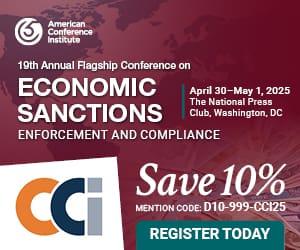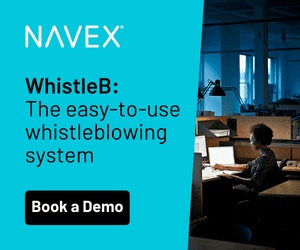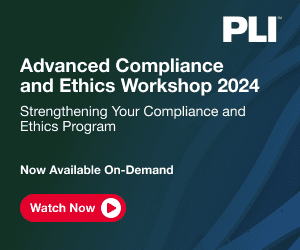The longest strike by U.S. auto workers in a quarter-century ended with the UAW reaching agreements with Ford, GM and Stellantis. But labor disputes aren’t the only reason the auto industry is frequently in the news — and frequently in the sights of regulators and lawmakers. Mark Chutkow and Jennifer Beidel of Dykema explore regulatory enforcement trends and best practices in the auto industry.
As a key segment of our economy, the automotive sector is frequently in the news — from the transformation of mobility, to autonomous driving, to green initiatives, to labor relations. The industry is also closely scrutinized by government regulators who oversee consumer protection, the environment, safety and the financial sector.
Compliance with the law and a positive working relationship with regulators is a key ingredient to economic success. As a result, it is important for corporate leaders in the automotive industry to know not only their customers’ needs but also the concerns and objectives of the regulators who oversee the sector. And if enforcement is on the horizon, companies should get ahead of the curve through effective compliance plans.
Substantive areas of enforcement focus
The main substantive areas of enforcement in the automotive sector are: (1) emissions; (2) product safety; (3) special purpose acquisition companies; (4) antitrust and labor; and (5) the FCPA and other international issues.
Emissions
In the emissions space, there have been seven high-profile automotive cases since 2017, brought in district courts in Michigan, New York and California with penalties ranging from $35 million to $4.3 billion. Aggravating factors that led to larger penalties included the use of cheating software or other defeat devices, spoliation of evidence or making false statements.
Other likely areas of environmental enforcement in the auto sector include investigations into efforts to manipulate electric vehicle range data or other greenwashing. ESG disclosures have also been a hot area of enforcement, especially for the SEC. These investigations tend to focus on compliance with 2010 climate change disclosure guidance, including material omissions or misstatements in required disclosures, as new climate disclosure rules from the SEC are pending.
Identifying Compliance Blind Spots
Establishing a cohesive risk & compliance framework can help avoid roadblocks
Read moreDetailsProduct safety
In the product safety space, there have been three high-profile automotive cases since 2014 with penalties ranging from $900 million to $1.2 billion. Aggravating factors included the use of falsified data, other evidence of concealment and making misleading statements.
Currently pending is an investigation by NHTSA and DOJ into the unintended acceleration of autonomous vehicles. That investigation, like the cases that preceded it, focuses on product safety problems that pose a risk of death or bodily injury.
SPACs
Special purpose acquisition companies or SPACs are publicly listed shell companies that startups often use to become publicly traded. The benefit of using SPACs is that their listing data can involve projections, which can help startups become listed. But SPACs have complex requirements that often make them targets of government investigations.
For technology-heavy companies, like automakers, SPACs are increasingly used. With that increasing use comes additional enforcement. For example, the U.S. Attorney’s Office for the Southern District of New York indicted the founder of one electric truck startup that announced a goal of zero emissions on the grounds that the founder and the company had made false statements. A second electric truck startup also recently received requests for information from the SEC, which caused a loss of nearly one-third of its stock price.
Antitrust and labor
On the labor side, “no poach” and non-solicit agreements can be a hotbed for enforcement against companies with a unionized workforce. Bribery schemes, like a 2018 case, can also involve unions and union officials. On the antitrust front, some legislators have flagged the expansion of “Big Tech” into the automotive industry as an area of potential concern.
FCPA and other international risks
Internationally, the risk of bribes that violate the FCPA increase every time a raw material is sourced from a country with a high level of corruption. Raw materials and mineral inputs for battery cells are often sourced from such countries, for example. And electric vehicle batteries require six times the mineral inputs of conventional cars, thereby increasing that risk. By way of example, 70% of the world’s cobalt is from the Congo, and Argentina and Zimbabwe are major lithium producers. All three are rated among the world’s most corrupt countries. A U.S. attorney in California recently charged an automobile executive with soliciting a $5 million bribe from a South Korean company in exchange for a promise of delivering a large contract for car parts.
On the sanctions front, China sanctions have had a large impact on the semiconductor industry. And, with respect to international trade, 10% of all claims of infringing goods involved the automotive and transportation industries in 2021.
Compliance programs
What should automotive companies do in light of these risks? As the saying goes, an ounce of prevention is worth a pound of cure. Prevention is best achieved by creating a strong corporate compliance program in consultation with counsel and by encouraging an ethos of compliance that comes down from the top.
DOJ has enumerated a list of mitigating factors that will help investigated companies avoid the most serious of outcomes. Among them is having a compliance program that is adequately resourced and empowered to function effectively. A top-shelf compliance program must evolve quickly as risks arise, include quantitative measures of training and risks, provide complete records access to investigators, include proactive testing of controls, respond to the increased risks after any company integration, make policies and hotlines accessible to employees and be proportional to the size of the business.
A well-functioning compliance program must also scrutinize all risky transactions, regardless of size, and must remediate any discovered issues promptly. Perhaps most importantly, companies must ensure that their corporate culture does not undermine their compliance program. From the DOJ’s perspective, the most dangerous combination is showing you knew what to do but failed to do it.
Conclusion
A little planning and foresight can ensure that automotive companies maintain a productive relationship with regulators and law enforcement authorities, while pursuing their goals of profitability and meeting customer needs. If compliance issues do arise, that same planning can put companies in the best position to understand the scope of the problem and take corrective action in a way that provides regulators confidence that the company is back on track. This will minimize costly litigation with the government and third parties, which will maintain customer confidence.

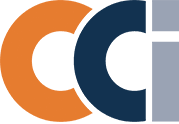


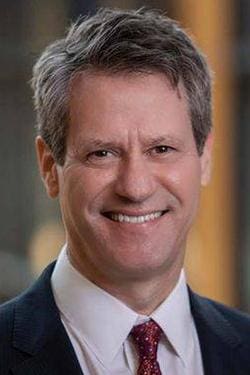 Mark Chutkow
Mark Chutkow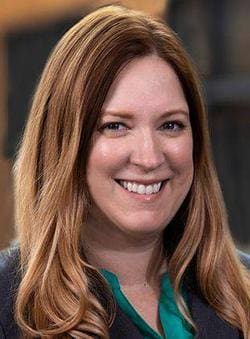 Jennifer Beidel
Jennifer Beidel






